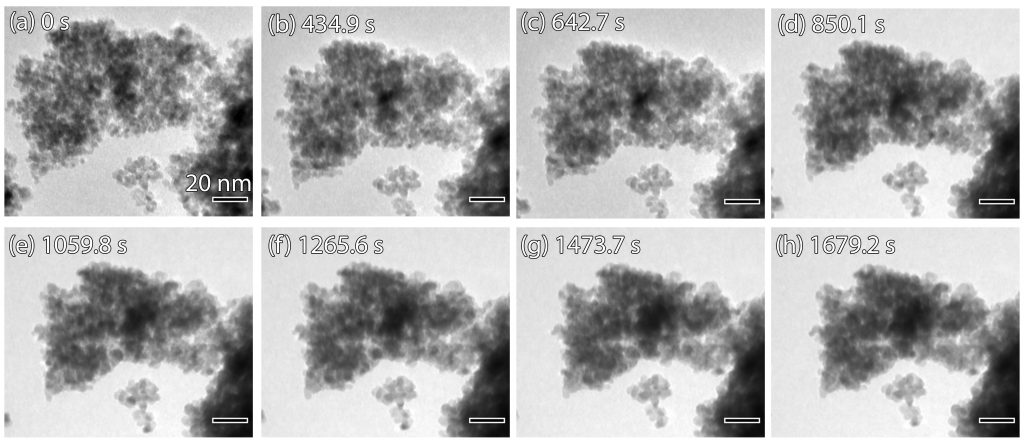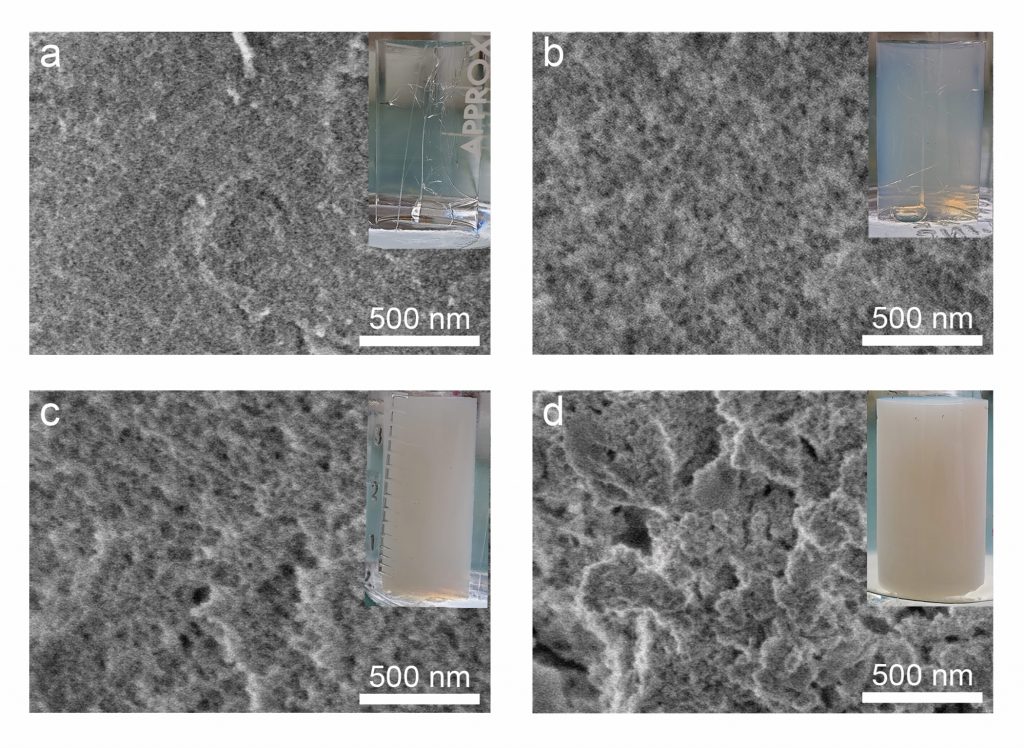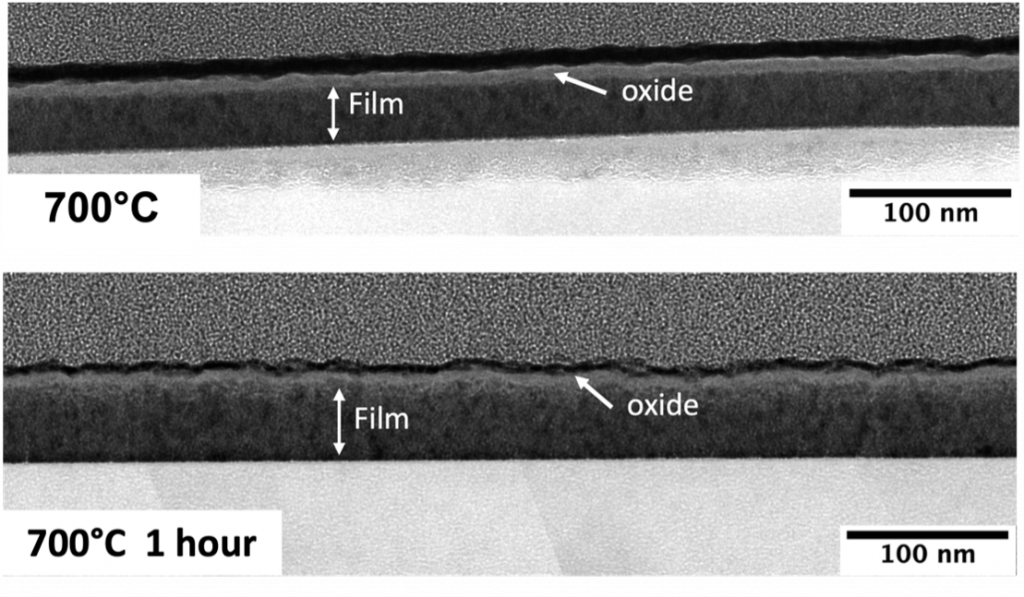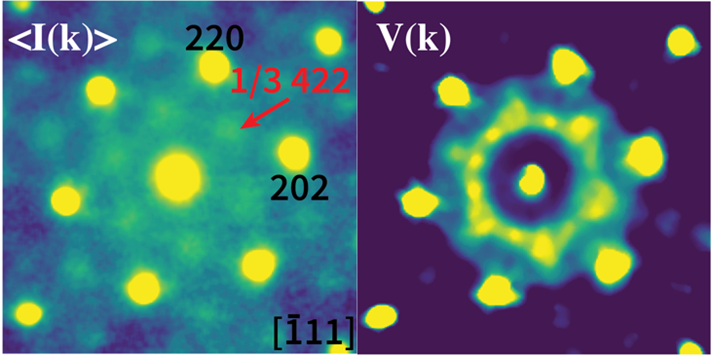Projects by topic:
Click on any of the links below for more details on our efforts pertaining to each topic (many are cross-listed).
List of select projects:
The projects below aren’t listed in any particular order, but they represent a handful of representative projects that are currently active in the group.
Deformation mechanisms in high performance ceramics

Ferroelastic toughening is an important yet elusive deformation mechanism in conventional thermal barrier coatings based on yttria stabilized zirconia. This mechanism, dependent on crystal symmetry, is also present in many electroceramics systems. The pheonomenon itself was identified many decades ago; however, we still lack a fundamental understanding of the controlling parameters necessary to effectively design tougher ceramics. We are striving to understand how microstructural effects such as grain size, orientation and phase constituency may impact the activation of ferroelasticity. To do this, we are using advanced microscopy techniques including electron backscatter diffraction, nanodiffraction, and small-scale mechanical cyclic loading configurations.
Understanding Short-range Order in Austenitic Steels for use in Hydrogen-Facing Applications
Electron diffuse scattering caused by short-range ordering (SRO) in austenitic steels has been observed using traditional selected area electron diffraction. However, such technique struggles to differentiate diffuse scattering signals stem from different types of SROs (heterogeneous and homogeneous SRO) in the system and thus limits the complete understanding of SRO behaviors. In this work, we demonstrate a procedure utilizing Scanning Electron Nanobeam Diffraction (or 4D-STEM) method and a basic Fluctuation Electron Microscopy technique, variance map, to analyze different type of SROs in a solution treated austenitic steel. The combination of 4D-STEM and variance map techniques enables SRO domain identification and deconvolution of homogeneous and heterogeneous SRO diffuse scattering.
Ion radiation assisted evolution in ceramics

We have numerous efforts investigating ion-matter interactions within ceramic systems including the study of radiation enhanced diffusion (RED) via in situ sintering experiments, the efficacy of pores as invariant defect sinks, radiation-induced ordering behaviors and the role of residual order on the amorphization and recyrstallization behavior of oxides.
Development of high temperature aerogels

The goal of the project is to develop an understanding of the structural and thermal properties of doped zirconia aerogels for use in thermal protection systems for aerospace applications. Formulations and synthetic approaches for high temperature aerogels will be developed through iterative synthesis and characterization of yttria-stabilized zirconia or hafnia aerogels with other dopants: ytterbium, gadolinium, cerium, and calcium. With high temperature aerogels identified, composite materials utilizing ceramic fiber papers and aerogels will be fabricated and extensively characterized to determine their effectiveness as insulators with stability at high temperatures for application in re-entry vehicles, rovers, thermoelectric generators, and hypersonic aircraft.
Ultrahard, oxidation tolerant transition metal diboride coatings from low temperature CVD

Diborides are ultra-high temperature ceramics that are known for their hardness, wear resistance and stability in extreme chemical and thermal environments. For bulk diborides, the oxidation resistance at high temperatures stems from the formation of a surface layer of liquid boron oxide. This boron oxide is volatile above 700°C, especially in the presence of moisture, and the evaporation of boron oxide at higher temperatures leads to the gradual consumption of the bulk ceramic. However, this poses a problem for the volumetrically limited transition metal diboride coatings and thin films. These lucrative properties of diborides make them extremely suitable coating materials for high temperature applications, but oxidation limits their application temperature regime, especially for application temperatures around 700°C.
Defects and the functionality of metallic structural thin films
Structure-property-processing relationships are at the heart of traditional materials science and engineering. In the field of metallurgy, careful refinement of these parameters over many decades have lead to many high performance alloys that can operate at high homologous temperatures, under severe corrosive conditions and extreme mechanical loads. As the scale of these structural alloys shrinks for applications including microelectromechanical systems (MEMS) and protective coatings, we are working to expand our understanding of fundamental relationships between the nonequilibrium microstructures, which are typical of films/structures at this scale, and the evolution of film properties. This work involves thin film processing, shaping and characterization using sputtering methods, current assisted densification schemes, electron microscopy and particularly small-scale mechanical characterization techniques.

